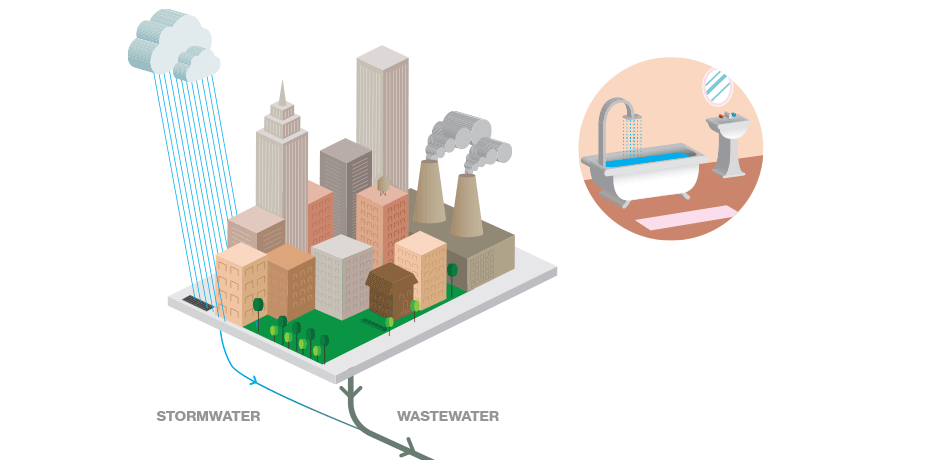Strategic Approaches to Boost Waste Water Therapy Efficiency and Lessen Environmental Impact
In the realm of waste water treatment, the mission for enhanced efficiency and lowered environmental influence is a perpetual challenge that requires strategic options. As culture faces the necessary to take care of water sources sustainably, a nuanced strategy becomes crucial. The integration of sophisticated treatment innovations, energy-efficient processes, resource healing methods, improved nutrient elimination techniques, and wise surveillance and control systems stands for a complex framework for resolving these pushing problems. Nonetheless, what exists at the core of this facility internet of approaches is the possible to reinvent the method we approach drainage treatment, not equally as a process of disposal, but as a valuable opportunity for innovation and environmental stewardship.
Advanced Treatment Technologies
Advanced membrane layer purification systems have actually revolutionized sophisticated wastewater treatment procedures, significantly boosting the elimination of pollutants. This technology has verified to be extremely efficient in removing a large range of pollutants, including pharmaceuticals, heavy steels, and natural substances, which are usually testing to get rid of through standard treatment methods.
Additionally, membrane filtration systems use numerous advantages over standard treatment methods. They need much less space, generate higher-quality effluent, and are extra immune to variations in influent water high quality. Additionally, these systems are extremely versatile and can be conveniently incorporated right into existing therapy plants or utilized as standalone systems for decentralized applications. As the need for tidy water proceeds to rise, the fostering of sophisticated membrane layer purification modern technologies is vital to ensure lasting and reliable wastewater therapy methods.
Energy-Efficient Procedures
The assimilation of energy-efficient processes in wastewater therapy systems is vital for optimizing source usage and minimizing functional expenses. By implementing energy-efficient modern technologies, therapy plants can substantially lower their carbon footprint and total ecological influence. One crucial approach to boosting power efficiency in wastewater therapy is the use of advanced aeration systems, such as great bubble diffusers or surface aerators, which can boost oxygen transfer performance and minimize energy consumption. In addition, integrating power recovery systems, like anaerobic digestion for biogas manufacturing or making use of excess warm for thermal procedures, can help balance out power needs and advertise sustainability.
Moreover, maximizing procedure control and automation via making use of innovative sensing units and monitoring systems can enhance overall energy effectiveness by readjusting procedures in real-time based upon real need and problems. Executing energy audits and consistently monitoring power efficiency indications are necessary techniques to recognize locations for renovation and track energy-saving efforts effectively. Generally, the fostering of energy-efficient procedures in wastewater therapy not just profits the atmosphere however likewise contributes to long-term price savings and operational sustainability.
Source Recuperation Techniques
With an emphasis on optimizing resource application and sustainability in wastewater treatment systems, the application of source recuperation approaches arises as a pivotal aspect in improving functional effectiveness. Source healing approaches in wastewater therapy entail the identification and extraction of important sources from the waste stream, thus transforming what was as soon as taken into consideration waste into a valuable property. By executing source address healing techniques such as nutrient elimination and recovery, energy generation from raw material, and the manufacturing of recyclable water, wastewater treatment plants can lessen environmental impact while making best use of effectiveness.

Boosted Nutrient Elimination Techniques
Implementing innovative nutrient removal strategies is necessary for enhancing the effectiveness of wastewater treatment systems. One of the crucial techniques made use of for enhanced nutrient elimination is the process of organic nutrient removal (BNR), which entails the removal of nitrogen and phosphorus with biological procedures.

In enhancement to BNR, advanced therapy methods such as membrane layer bioreactors Check This Out (MBRs) and created wetlands can likewise be used to enhance nutrient elimination effectiveness. MBRs make use of membrane layers to achieve high-quality effluent requirements by successfully removing nutrients and suspended solids. Built marshes resemble natural wetland procedures to get rid of nutrients through plant uptake, microbial activity, and sedimentation. By integrating these innovative nutrient elimination strategies right into wastewater therapy systems, communities and markets can successfully lower nutrient pollution and protect the environment.
Smart Monitoring and Control Equipment
Making use of innovative innovation, the assimilation of clever surveillance and control systems transforms the operational performance of wastewater therapy facilities. These systems integrate advanced sensors and information analytics to constantly monitor vital criteria such as pH levels, turbidity, dissolved oxygen, and circulation rates in real-time. By accumulating and examining this information, operators can obtain useful insights right into the performance of the therapy procedures, enabling aggressive modifications to maximize treatment performance.
Smart monitoring and control systems additionally support remote surveillance capabilities, permitting drivers to gain access to real-time data and control functions from off-site areas. This remote availability enhances operational versatility and responsiveness, enabling quick treatments in case of system breakdowns or fluctuations in influent top quality. The anticipating maintenance abilities of these systems aid avoid devices failures and decrease downtime, ultimately improving the overall reliability of wastewater treatment procedures.
Final Thought
To conclude, strategic methods such as sophisticated therapy technologies, energy-efficient procedures, source recuperation approaches, enhanced nutrient removal strategies, and wise monitoring and control systems play an important role in improving wastewater therapy effectiveness and lessening environmental impact. By executing these methods, wastewater treatment plants can improve their overall performance, decrease energy consumption, recover important sources, and make certain conformity with ecological guidelines. These techniques are crucial for sustainable and efficient wastewater monitoring methods.

In verdict, strategic techniques such as advanced therapy innovations, energy-efficient processes, resource recuperation techniques, enhanced nutrient elimination strategies, and wise surveillance and control systems play a critical role in boosting wastewater therapy performance and reducing ecological influence.